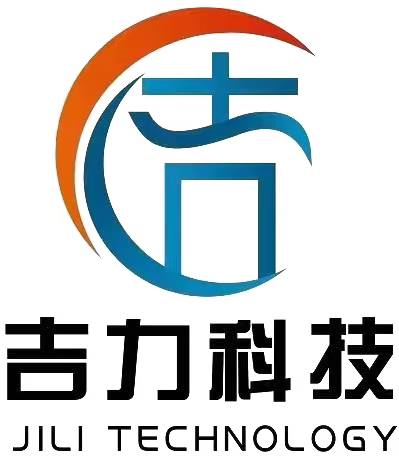CNC Machining Case for Automotive Tail Light Housing
Dongguan Jili Technology Co., Ltd. has been deeply engaged in the CNC machining field for many years and accumulated rich experience in precision part processing. This time, undertaking the CNC machining project of the automotive tail light housing, we provide high – quality solutions for automotive parts manufacturing with professional technology and a rigorous attitude.
I. Project Background
The customer is an enterprise focusing on the R & D and production of automotive lamps. The new – style automotive tail light design pursues a unique shape and high – quality appearance. As a key component, its housing needs to have precise dimensional accuracy and good surface quality to adapt to the internal light source components of the tail light and the vehicle installation requirements. After a comprehensive evaluation, the customer chose us for CNC machining, expecting to create an automotive tail light housing that meets strict standards.
II. Machining Difficulties
- Complex Curved Surface Machining: The automotive tail light housing has a unique shape, including multiple complex curved surfaces and arc – edge transitions. It is necessary to ensure that the curved surfaces are smooth and fluid, which places extremely high requirements on the tool path planning of CNC machining and the five – axis linkage control of the machine tool.
- Dimensional Accuracy Control: The tolerance of the installation interface of the housing and the matching dimensions with the internal components of the tail light needs to be controlled within ±0.05mm to ensure precise adaptation to the light source, circuit board, etc., and to ensure the normal function of the tail light and the stability of vehicle assembly.
- Material Property Challenges: The adopted plastic material (such as PC plastic) has a certain toughness, and phenomena such as deformation and tool sticking are prone to occur during machining. It is necessary to reasonably select cutting parameters and tools to balance machining efficiency and surface quality.
III. Jili Solutions
(I) Process Planning
- 3D Modeling and Programming Optimization: Import the 3D model of the tail light housing provided by the customer and use professional CAD/CAM software for machining programming. For complex curved surfaces, a five – axis linkage machining strategy is adopted, and the tool path is carefully planned to ensure smooth and continuous curved surface machining; for key dimension positions, multiple measurement and compensation links are set to ensure accuracy.
- Tool and Cutting Parameter Selection: Cemented carbide coated tools are selected. According to the characteristics of plastic materials, the cutting speed, feed rate, and cutting depth are optimized. High – speed milling is adopted to reduce the contact time between the tool and the material, reducing the risk of tool sticking; the cutting force is controlled to avoid the deformation of the plastic housing.
- Step – by – Step Machining Process:
- Rough Machining: Quickly remove most of the allowance, initially form the outline of the housing, reserve a uniform allowance for subsequent finishing, and control the machining temperature to prevent the plastic from deforming due to overheating.
- Semi – finishing: Perform refinement processing on curved surfaces, edges, and other parts, correct the errors of rough machining, and further approach the final size and surface quality requirements.
- Finishing: With high – precision cutting parameters, perform precision machining on key parts such as the curved surface and matching surface of the housing to ensure dimensional accuracy and surface roughness (reaching below Ra0.8μm) to meet the assembly and appearance requirements.
- Surface Treatment Preparation: After machining, deburring and polishing processes are carried out on the housing to provide a good foundation for subsequent possible surface treatment processes such as coating and painting, ensuring the coating adhesion and appearance effect.
(II) Quality Control
- Machining Process Monitoring: An online monitoring system is equipped in the CNC machining center to monitor parameters such as cutting force, spindle vibration, and machining temperature in real – time. Once an abnormality occurs (such as a sudden change in cutting force, excessive temperature, etc.), the cutting parameters are automatically adjusted or the machining is paused to avoid the production of defective products; at the same time, after each machining stage is completed, size sampling inspection is carried out to detect and correct deviations in a timely manner.
- Finished Product Inspection: A coordinate measuring machine is used to fully inspect the key dimensions of the tail light housing (such as the position of installation holes, matching surface tolerance, etc.) to ensure compliance with design requirements; optical detection equipment is used to check the surface quality, including the smoothness of curved surfaces, and whether there are scratches, burrs, and other defects; the assembly compatibility is simulated and tested to verify the adaptability to internal components and vehicle installation, and a detailed quality inspection report is issued.
IV. Project Achievements
Through professional CNC machining processes and strict quality control, we successfully delivered the automotive tail light housing products. The machined housing has precise dimensional accuracy control, smooth and fluid complex curved surfaces, and excellent surface quality, perfectly adapting to the internal components of the tail light and vehicle installation. After the customer’s installation and testing, the tail light functions normally and has a beautiful appearance, which is highly recognized by the customer. This project not only demonstrates the technical strength of Dongguan Jili Technology Co., Ltd. in the field of CNC plastic machining but also provides a reliable precision machining service case for the automotive parts manufacturing industry, helping customers improve product competitiveness.

